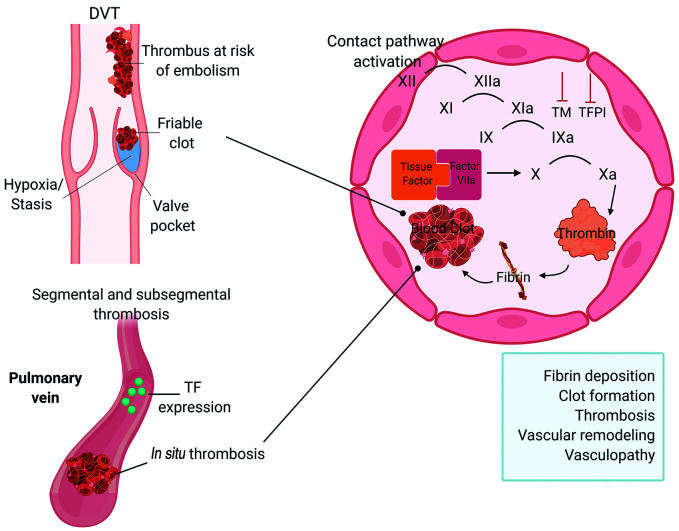Figure 3.
The TF and contact pathways activate coagulation and generate thrombin. Abnormal expression of intravascular TF in sickle cell disease (SCD), the so called “blood borne TF”, triggers intravascular blood coagulation and pathological thrombosis. After binding with plasma factor VIIa, TF activates the extrinsic pathway of coagulation, generating thrombin, which mediates fibrin deposition, thrombosis and vascular remodeling. Besides lowered natural anticoagulant factor levels (thrombomodulin, protein C and S) also favor thrombosis. Activation of the contact pathway of coagulation by RBC phosphatidylserine (PS) exposure, cell-derived extracellular vesicles (EV), platelet polyphosphates, cfDNA and NET also sustain thrombin generation. TF and thrombin cause chronic inflammation possibly leading to endothelial injury, vascular permeability, angiogenesis and vascular remodeling, all of which are reflected by vasculopathy. Figure created with BioRender.com.

